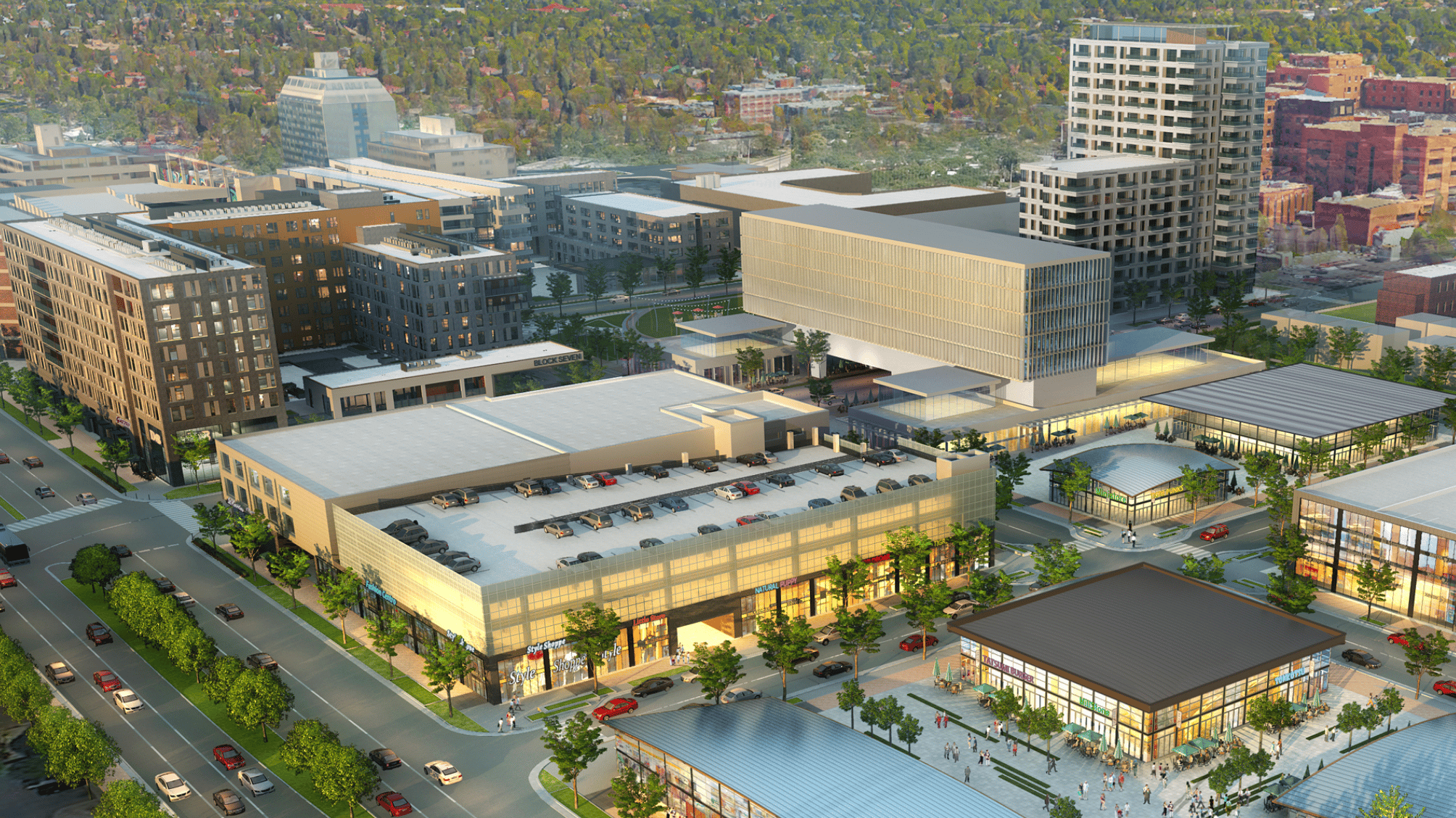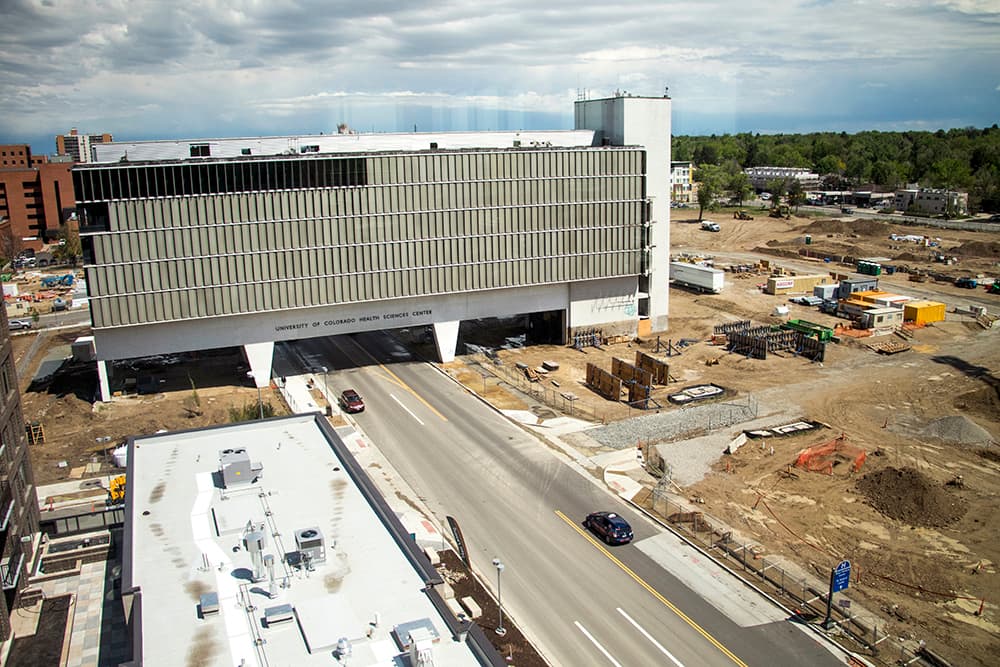Readers, thankfully, ask Denverite a lot of questions. But when two readers send separate questions on the same subject, our editor withholds pay until we answer them.
That's a joke, and I'm here to answer this one whether you laughed or not: Naomi Perera and Aaron Schultz each asked if the "pedestrian bridge" -- a private office building that spans over the street -- near the massive redevelopment at 9th and Colorado is really getting demolished.
The answer is yes. The span of 1960s architecture hanging over 9th Avenue between Albion and Ash streets, once called "the Bridge of the Future" for its contributions to health science, will soon be the bridge of the past. Offices and research labs used by the the University of Colorado's Health Sciences Center were housed within this giant, mid-century modern dresser.
Breathing new life into the bridge-building was part of the original plan.
The developer, Continuum Partners, aimed to fit the structure into the new, dense district of homes, businesses and restaurants. Early renderings show the building as a significant piece of the area's future -- there was talk of adapting it for a hotel, condos, recreational uses and office space. In the end, adapting the structure was too complicated and cost prohibitive for Continuum Partners, according to Frank Cannon, the company's development director.

"We tested virtually every programmatic use that we could come up with for the building, and just functionally it's difficult to repurpose that building," Cannon said. "There's literally not a programmatic use we didn't test."
The Bridge of the Future was designed inside out. Its corridors were on the outside, concealing the offices and labs on the inside so sunlight would not affect research experiments. The plumbing, too, runs solely through the center of the building. Working around these oddities made the building financially unfeasible, Cannon said.
Some residents at neighborhood meetings called the bridge an "eyesore," Cannon said. Others liked it. The team was not committed to the demolition until recently but told neighbors Continuum was leaning towards spiking the bridge in September, he said.
No overhang will replace the span across the 9th Avenue. Instead of the old stuff, the "9th and CO" district will include a compact mix of apartments -- some below market-rate -- as well as condos, town homes, a movie theater, restaurants, shops and banks.
According to nostalgia, the building should stay.
The Denver Department of Community Planning and Development posted a notice of the impending demolition and suggested it could be saved if someone applied to designate the bridge a historical landmark. No one came forward, according to CPD. Demolition will begin in the next three or four weeks, but will take about four months to finish. Sorry -- no implosion this time.
"I'm sad to see it go because it's a neat piece of 1960s architecture," Perera said in interview. "I grew up in Denver and am just sad to see it to go."
Schultz used to visit his grandfather in the neighborhood and always thought the thing was pretty. It also "pays homage" to the neighborhood's history, he said.
"Change is fine but at the same time you still have to honor your past and your history," Schultz said. "They're erasing history and that's something I take issue with."
An old nurses dorm about a half-block east will stay put, according to the developer.













